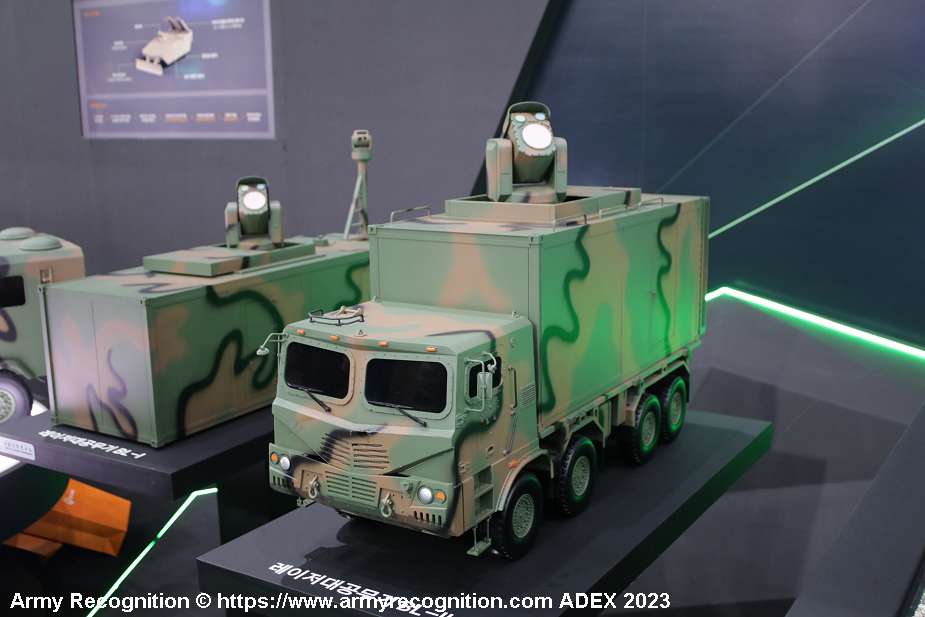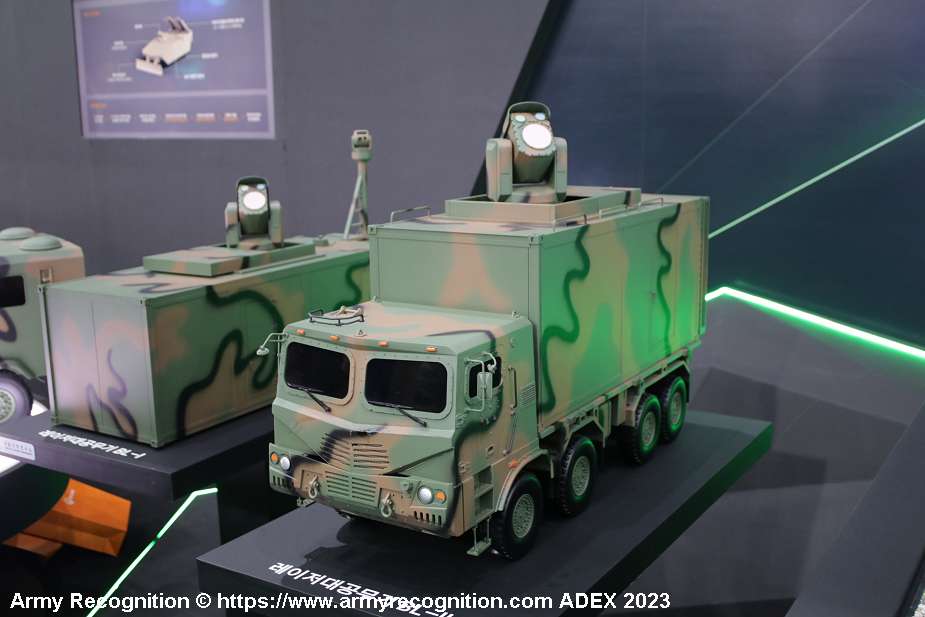Mass-production of “Laser Air Defense Weapon Block-I“ by Hanwha Aerospace

 youtube.com
youtube.com
- container-sized static land-based laser system (9x3x3 m)
- 20 kW optical fiber laser
- approx. 700°C heat, 10-20 sec impulse
- up to 3 km range, integrated radar mast
- $1.45 cost per shot (only 2.000 Won)
- developed since 2019 ($63 mil. budget)
- against small to mid drones/multicopters/UAV
- deployment start in 2024
Block-II will feature a mobile 30 kW laser on truck with ~4 km range against aircraft/missile.

Block-III will feature 100 kW with ~20 km range.
IMO a premature deployment: issues like rainy & foggy weather, usability against massive swarm drone attacks aren‘t solved yet …

1발 발사 비용이 고작 2천원?! 국내 개발 레이저대공무기 실사격 공개! #shorts
레이저를 무기에 적용하는한국형 스타워즈 프로젝트의 첫번째 사업!레이저대공무기(Block-I) 양산 착수레이저대공무기는 광섬유로부터 생성된광원 레이저를 표적에 직접 조사하여 무력화근거리에서 소형무인기 및 멀티콥터 등 정밀 타격 가능별도의 탄약이 불필요하며,1회 발사 시 소요 비용은 ...
- container-sized static land-based laser system (9x3x3 m)
- 20 kW optical fiber laser
- approx. 700°C heat, 10-20 sec impulse
- up to 3 km range, integrated radar mast
- $1.45 cost per shot (only 2.000 Won)
- developed since 2019 ($63 mil. budget)
- against small to mid drones/multicopters/UAV
- deployment start in 2024
Block-II will feature a mobile 30 kW laser on truck with ~4 km range against aircraft/missile.
Block-III will feature 100 kW with ~20 km range.
IMO a premature deployment: issues like rainy & foggy weather, usability against massive swarm drone attacks aren‘t solved yet …
Last edited:



![An anti-air laser weapon system Block-I to be deployed in 2024 [DEFENSE ACQUISITION PROGRAM ADMINISTRATION] An anti-air laser weapon system Block-I to be deployed in 2024 [DEFENSE ACQUISITION PROGRAM ADMINISTRATION]](/proxy.php?image=https%3A%2F%2Fkoreajoongangdaily.joins.com%2Fdata%2Fphoto%2F2024%2F07%2F11%2F7dcfc599-3330-4a64-bcbc-edf6e815d06e.jpg&hash=5b35140c03cdc1fed304a55bb3d2b422)




